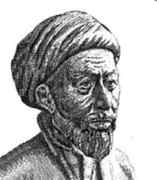Person: Beg, Ulugh

Ulugh Beg was the grandson of the conqueror Tamerlane and was a mathematician and astronomer. He founded an important centre for study at Samarkand staffed with the best scientists of the time. He did important early work on trigonometry.
Mathematical Profile (Excerpt):
- Although in this archive we are primarily interested in Ulugh Beg's achievements in mathematics and astronomy, we need to examine the history of the area since it had such a major impact on Ulugh Beg's life.
- Shortly after his grandson Ulugh Beg was born, Timur invaded India and by 1399 he had taken control of Delhi.
- Samarkand had been the capital of Timur's empire but, although his grandson Ulugh Beg had been brought up at Timur's court, he was seldom in that city.
- When Timur was not on one of his military campaigns he moved with his army from place to place and his court, including his grandson Ulugh Beg, travelled with him.
- Ulugh Beg was primarily a scientist, in particular a mathematician and an astronomer.
- In 1417, to push forward the study of astronomy, Ulugh Beg began building a madrasah which is a centre for higher education.
- The madrasah, fronting the Rigestan Square in Samarkand, was completed in 1420 and Ulugh Beg then began to appoint the best scientists he could find to positions there as lecturers.
- Ulugh Beg invited al-Kashi to join his madrasah in Samarkand, as well as around sixty other scientists including Qadi Zada.
- There is little doubt that, other than Ulugh Beg himself, al-Kashi was the leading astronomer and mathematician at Samarkand.
- In the letters al-Kashi praises the mathematical abilities of Ulugh Beg but of the other scientists in Samarkand, only Qadi Zada earned his respect.
- Ulugh Beg led scientific meetings where problems in astronomy were freely discussed.
- Usually these problems were too difficult for all except al-Kashi and the letters confirm that al-Kashi was the closest collaborator of Ulugh Beg at his madrasah in Samarkand.
- In addition to the madrasah, Ulugh Beg built an observatory at Samarkand, the construction of this beginning in 1428.
- Al-Kashi and other mathematicians and astronomers appointed to the madrasah also worked at Ulugh Beg's Observatory.
- This excellent book records the main achievements which include the following: methods for giving accurate approximate solutions of cubic equations; work with the binomial theorem; Ulugh Beg's accurate tables of sines and tangents correct to eight decimal places; formulae of spherical trigonometry; and of particular importance, Ulugh Beg's Catalogue of the stars, the first comprehensive stellar catalogue since that of Ptolemy.
- The catalogue was the results of a combined effort by a number of people working at the Observatory including Ulugh Beg, al-Kashi, and Qadi Zada.
- The calculation is built on an accurate determination of sin 1° which Ulugh Beg solved by showing it to be the solution of a cubic equation which he then solved by numerical methods.
- Data from his Observatory allowed Ulugh Beg to calculate the length of the year as 365 days 5 hours 49 minutes 15 seconds, a fairly accurate value.
- It was discovered that Ulugh Beg had been buired in his clothes which is known to indicate that he was considered a martyr.
Born 1393, Soltaniyeh, Timurid, Persia (now Iran). Died 27 October 1449, Samarkand, Timurid empire.
View full biography at MacTutor
Tags relevant for this person:
Ancient Arab, Astronomy, Origin Iran
Thank you to the contributors under CC BY-SA 4.0! 

- Github:
-

- non-Github:
- @J-J-O'Connor
- @E-F-Robertson
References
Adapted from other CC BY-SA 4.0 Sources:
- O’Connor, John J; Robertson, Edmund F: MacTutor History of Mathematics Archive
